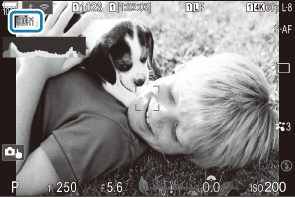Taking HDR (High Dynamic Range) images (HDR)

The camera varies exposure over a series of shots, selects from each tone range with the highest level of detail, and combines them to create a single picture with a wide dynamic range. If the photo features a high-contrast subject, details that would otherwise be lost in shadows or highlights will be preserved.
- Use a tripod or take similar measures to fix the camera in place.
Menu
- MENU U b U 1. Computational Modes U HDR
| Off | HDR is disabled. |
|---|---|
| HDR1 | Each time you take a photo, the camera will take a series of shots while varying exposure and combine them into a single picture. Choose [HDR1] for natural-looking results, [HDR2] for a more painterly effect.
|
| HDR2 | |
| 3f 2.0EV | Each time you take a photo, the camera will vary exposure over a series of shots. The shots are not combined to create a single picture. The shots can however be combined using HDR software on a computer or other devices.
|
| 5f 2.0EV | |
| 7f 2.0EV | |
| 3f 3.0EV | |
| 5f 3.0EV |
- ”HDR” appears on the screen.

Release the shutter.
- Each time you press the shutter button, the camera will take the selected number of shots.
- In [HDR1] and [HDR2] modes, the camera will automatically combine the shots into a single picture.
- Exposure compensation is available in modes P, A, and S.
- The image displayed in the monitor or viewfinder during shooting differs from the final HDR picture.
- Noise may appear in the final picture when a slower shutter speed is selected in [HDR1] or [HDR2] mode.
- When [HDR1] or [HDR2] is enabled, [Drive] is set to [A] (Silent Single). [q12s] (Silent self-timer 12s), [q2s] (Silent self-timer 2s) and [qC] (Silent custom self-timer) can be set.
The following cannot be used:
- flash photography, bracketing, focus stacking, multiple exposure, interval-timer photography, keystone compensation, live ND shooting, fisheye correction, High Res Shot, and live GND shooting

